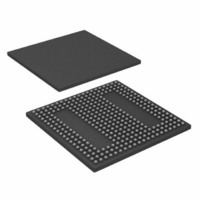ADSP-BF538BBCZ-5F4 Analog Devices Inc, ADSP-BF538BBCZ-5F4 Datasheet - Page 7

ADSP-BF538BBCZ-5F4
Manufacturer Part Number
ADSP-BF538BBCZ-5F4
Description
IC, FLOAT-PT DSP, 16BIT, 533MHZ, BGA-316
Manufacturer
Analog Devices Inc
Series
Blackfinr
Type
Fixed Pointr
Specifications of ADSP-BF538BBCZ-5F4
No. Of Bits
16 Bit
Frequency
533MHz
Supply Voltage
1.25V
Embedded Interface Type
CAN, I2C, PPI, SPI, TWI, UART
No. Of I/o's
54
Flash Memory Size
512KB
Interface
CAN, SPI, SSP, TWI, UART
Clock Rate
533MHz
Non-volatile Memory
FLASH (512 kB)
On-chip Ram
148kB
Voltage - I/o
3.00V, 3.30V
Voltage - Core
1.25V
Operating Temperature
-40°C ~ 85°C
Mounting Type
Surface Mount
Package / Case
316-CSPBGA
Lead Free Status / RoHS Status
Lead free / RoHS Compliant
For Use With
ADZS-BFAUDIO-EZEXT - BOARD EVAL AUDIO BLACKFIN
Lead Free Status / RoHS Status
Lead free / RoHS Compliant, Lead free / RoHS Compliant
event service routines to be active simultaneously. Prioritization
ensures that servicing of a higher priority event takes prece-
dence over servicing of a lower priority event. The controller
provides support for five different types of events:
Each event type has an associated register to hold the return
address and an associated return-from-event instruction. When
an event is triggered, the state of the processors is saved on the
supervisor stack.
The ADSP-BF538/ADSP-BF538F processors’ event controllers
consist of two stages, the core event controller (CEC), and the
system interrupt controllers (SIC). The core event controller
works with the system interrupt controllers to prioritize and
control all system events. Conceptually, interrupts from the
peripherals enter into one of the SICs, and are then routed
directly into the general-purpose interrupts of the CEC.
Core Event Controller (CEC)
The CEC supports nine general-purpose interrupts (IVG15–7),
in addition to the dedicated interrupt and exception events. Of
these general-purpose interrupts, the two lowest priority inter-
rupts (IVG15–14) are recommended to be reserved for software
interrupt handlers, leaving seven prioritized interrupt inputs to
support the peripherals of the processor.
Table 2
in the event vector table (EVT), and lists their priorities.
• Emulation – An emulation event causes the processor to
• Reset – This event resets the processor.
• Nonmaskable interrupt (NMI) – The NMI event can be
• Exceptions – Events that occur synchronously to program
• Interrupts – Events that occur asynchronously to program
enter emulation mode, allowing command and control of
the processor via the JTAG interface.
generated by the software watchdog timer or by the NMI
input signal to the processor. The NMI event is frequently
used as a power-down indicator to initiate an orderly shut-
down of the system.
flow (the exception is taken before the instruction is
allowed to complete). Conditions such as data alignment
violations and undefined instructions cause exceptions.
flow. They are caused by input pins, timers, and other
peripherals, as well as by an explicit software instruction.
describes the inputs to the CEC, identifies their names
Rev. A | Page 7 of 56 | January 2008
Table 2. Core Event Controller (CEC)
Priority
(0 is Highest) Event Class
0
1
2
3
4
5
6
7
8
9
10
11
12
13
14
15
Emulation/Test Control
Reset
Nonmaskable Interrupt
Exception
Reserved
Hardware Error
Core Timer
General Interrupt 7
General Interrupt 8
General Interrupt 9
General Interrupt 10
General Interrupt 11
General Interrupt 12
General Interrupt 13
General Interrupt 14
General Interrupt 15
ADSP-BF538/ADSP-BF538F
EVT Entry
EMU
RST
NMI
EVX
—
IVHW
IVTMR
IVG7
IVG8
IVG9
IVG10
IVG11
IVG12
IVG13
IVG14
IVG15












